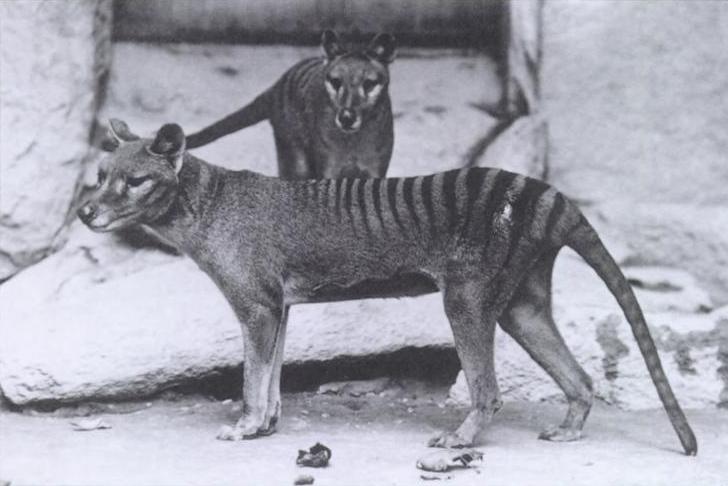Authorities in Australia are looking into claims that thylacines, more commonly known as Tasmanian tigers – thought to have been extinct since earlier in the century – may have been spotted in the country.
The last thylacine in the wild was killed between 1910 and 1920. In 1936, the last thylacine in captivity died in Hobart. Since then, there have been no sightings and no evidence that the animals still existed, CBS reports. They were declared officially extinct in 1986, according to the Tasmanian Government’s Department of Primary Industries, Parks, Water and Environment.
But recent supposed sightings of Tasamnian tigers have convinced scientists at James Cook University in Australia to look into whether or not the animals might still be around, after all. Recent reports from people in North Queensland have provided detailed descriptions of animals that closely resembled Tasmanian tigers.
Despite the name “tiger,” thylacines are not part of the cat family. They are also different from the Tasmanian devil, which is another marsupial native to Australia and still very much alive.
Fossils suggest that thylacines, Thylacinus cynocephalus, which means “dog-headed pouched one,” first appeared around 4 million years ago. They once populated Australia. But then European settlers arrived on the continent in the 19th century, the thylacines began dying out due to hunting, diseases and loss of habitat, the National Museum of Australia reports.
The scientists will investigate sites on the Cape York Peninsula, based on sightings by a member of the Queensland Park Service and a second observer.
The latter is a “a frequent camper and outdoorsman,” says Bill Laurance, one of the scientists from JCU on the case.
All the sightings were done at night, but the descriptions matched those of Tasmanian tigers. In one report, four animals were seen at close range, lighted by a spotlight at around 20 feet away. The details provided by the person who saw the animals strongly suggested that he had was not looking at something else, Laurance says.
“We have cross-checked the descriptions we received of eye-shine color, body size and shape, animal behavior, and other attributes, and these are inconsistent with known attributes of other large-bodied species in North Queensland, such as dingoes, wild dogs or feral pigs,” he adds.
The survey is expected to begin in April.
























